
The first time it happened, I was seven. An imam in our neighbourhood mosque held me, taking my hand, wrapping my fingers (they were still tiny) around his genitals, then massaging it. I was so small I did not know what it was that was in my hand. I had never seen it before and I certainly did not know what it felt like.
“Do you like it?” he asked again and again, until someone came to the room, and he quickly let go of me.Later, I told my mom about this peculiar incident, and she wept for weeks and months over it but told me not to tell anyone. I was so small that I asked my mother why and what exactly was the imam asking me to do. And why would I like it? I asked my mother if I could tell my grandfather who I was really close to, she said,
“No, not even grandpa.”The next time, not long after, it was another imam (it seemed as though the word was going around that I was an easy target–I was mostly a shy and quiet child). My mother could not leave me alone anywhere after that, I wasn't allowed to play outside, or be out of sight. I grew up, afraid and wary, but never protested, and most of the times never told a soul. During my teens, however, it began again; by a teacher, my school bus driver, groping, fondling, grabbing, then later astonishingly a colleague, a friend, a number of friends, a doctor, a relative, many relatives, a stranger and then many strangers. It was both the men I trusted and those whom I avoided. It was the men I admired, respected, and those I knew nothing about. It was the men I had crushes on. I felt like I was a magnet for trouble. It wasn’t until my late teens that I saw another girl being harassed publicly in broad daylight. News flash: It wasn’t just me. But I saw that no one helped that girl. I remember transforming from the timid girl who feared men, to an angry woman. I slapped men on the street – the grabbers, often even catcallers; I pinched men who slipped their fingers under the seat in public transports (yes, it is very common in Karachi’s buses); I threw pebbles (sometimes stones) on those who hoped to flee after the act. In fact, I became an expert on finding pebbles; I knew what size, type and weight to look for that would strike the target accurately from a distance. Especially if the harasser was on a bike, I knew how to quickly grab one and not miss my target. Girls in my college used exam boards to cover their chests when they would walk outside the college, to curtail the chances of being harassed by men. I stayed alert, and took on men who would harass/hurt other girls. My late teens and early 20s passed away like this. My forehead still has a slight but stubborn frown, sustained from the creases from those young days. Many family members and younger cousins made fun of me and called me names. Women who knew how I dealt with such men on the streets never wanted to go out to the bazaar with me; they felt embarrassed of my protests. They told me that it was not appropriate for girls to behave in such a manner and that I didn’t have to be like the men. Once I beat up the son of a police officer, in front of other men in the neighbourhood, in Karachi. Soon the said police officer showed up at my house, with protocol, to see my father. A number of our neighbours and the elderly (it’s important to note that these were false accusations) accused me of having bad character. They said I was catcalling their son and that I should be locked in the house. This wasn’t the first time men spoke to my father about my ‘bad character’. It was outrageous for them that a women, a tiny girl, was telling them “no”! My father, a simple man, was embarrassed and had no idea why complaints were being made if I wasn’t the culprit. Being a man, it wasn’t obvious to him what was obvious to my mother. In the conservative neighbourhood that we lived in, my father was often asked why he would let me out of the house in the first place. So, I was punished for months. It affected my school life and hence the process of my heart being broken into pieces initiated. I realised, even though I behaved strongly, my boldness was no good. I was not stronger than all of them. Silly me, so little in my teens, I should have listened to all the girls who kept their mouths shut and told me to do the same. When harassment came in my 20s and 30s, often in the field as a reporter or at university campuses (where I was always and by all means reminded I was too young to be a professor), it was by the men who did not go to my father anymore. During my protests, men shunned me in other ways. They went behind my back and called me names – a Manhattan lawyer I refused to kiss, who I confronted me via an email, responded to me with threats, and I genuinely got scared of him. Whether they are men from the east or men from the west, the story is the same. If you tell a man off – white, brown or even an orange man – he will go after you. They would falsely accuse you of things just because it’s convenient. Society, both men and women, believe the man. Men took credit for my work and sometimes even stole my work. They hit on me even when I told them I was dating someone else or even if they were married. They kept whispering in my editor’s ears that my work was horrible; an incident I was told by the perpetrator himself and when confronted, he said he did it “just like that”. They did not pay me for the work I did for months, spread rumours about not only my character (because that wasn’t enough) but the quality and authenticity of my work just so they could nullify the need for my work. It’s a strategy, you see. These men in my adult life were not young boys from another neighbourhood in Karachi anymore; these were educated, smart, influential grown men and they knew how to smear. They were my flirtatious bosses or the men who wanted to be bosses because they thought I was alone, and needy. Men assume that being a woman by default, I ought to do favours to get ahead. Some men were my sources in the stories I were to write; powerful military men who wanted to ‘trade’ information with me, or socially weak men. In one instance, an old refugee man mistook my empathy as an invitation. All these men tore away my spine. They took away so much of my energy, that when I say I am tired, I am not just lethargic tired; I am broken-into-pieces tired. My forehead burns with the warm racing blood as I type this. Somewhere along the line, I completely lost my toughness that I had when I was a teenager. I became soft and mushy, unsure and nervous. People who say that women engage in sexual relationships for career advancements simply want to get you busy in the boulderdash. Where are those women? Show me! Show me the women who exchange sexual favours to get ahead. The truth is, it is just something men like to tell each other when they harass, abuse and attack women. When these women stand up for themselves and tell them ‘no’, they go darting at them. The time we spend manoeuvring all these men, missing their darts is a difficult defence technique to achieve in this battle, especially when you are weak and under-resourced. Last month, while I was on a work trip in Georgia, I was pushed to the wall by a man at a friend’s house. He assumed I would be open to it – mostly because in his mind, that’s what women traveling (working/driving/breathing) alone are looking for, to be forced against walls. What is evident, though, is that safe environments don’t become magically safer just because you are in your 30s and relatively wiser. Last week, another incident occurred in Turkey. I was interviewing a man and his hands wandered from the keyboard to my chest. This is never going to stop. Over the past few years, I realise how silenced I feel in my adult life, all the time. Words muzzle themselves. Conditioning! Discouragement! Accusations! Trauma! Brokenness! I have internalised my rage that turned it into my depression, affecting my health. I had become the quiet and timid girl one again – a child who couldn’t tell anyone about the abuse she faced, not even to those who were close to her. I wanted to put my energy into solutions (which I shall continue) and not in the physical fights. I wasn’t afraid of being the ‘magnet for trouble’ again. But today, if I end up being one for the sake of standing up against the wrong, so be it. No matter how right you are, misogyny has no fact-checker. False accusations confuse society towards women, their character and their work. It belittles their fights. It belittles all our fights. Yes, love and support will mend things but we have to fight alongside for our rights. This strenuous past week has been illuminating, because so many women, colleagues and friends shared their stories. I thank them all. Telling your story is an act of fighting too, and listening and believing these stories are part of the battle that we need to win. I am listening and letting others know that they are not alone in this fight. To all the women who feel and face what I do, I am taking an oath today – I will not deny my right to fight, and I won’t deny your right to be heard. I will fight the abusers – sexual, psychological and racial – by listening and speaking. Most of the time, you can't understand everyone’s struggle out of the cave, but what’s the harm in trying? We need to empathise and speak for others as well. As I learn in my 30s to love fiercely, I will also prepare myself to fight fiercely. And dear men, if you care about us women, don’t forget to show your support. No amount of shyness or unpreparedness should burden your courage to help women who have suffered so deeply and for so long. #MeToo #NotAnyMore Author’s note: After writing this Facebook post, I received dozens of emails, messages, notes, stories, mostly men showing their support. It made me hopeful. I was not expecting to be noticed, because I am used to being ignored when I raise a sensitive issue like this one. Once, while I was working for a TV channel in Pakistan, I was blamed, shamed and attacked for reporting harassment of a senior colleague. It caused a long-lasting impact on my mental health, my courage and my career. It is a reality of every woman’s life; this will happen to any woman who utters a word. Doubt comes before empathy. And your doubt in us could mean we would have to start our lives from scratch. We should be wise in how we react to these stories. Whether women speak out or not, their energies and freedoms are being consumed. It would be ideal to live in a more accepting society where these women can trust their instinct to speak out, when it is necessary for them to speak out.


 We see Bilal Ashraf playing the male lead, who is a rockstar. Urwa Hocane plays the leading lady, Reshmi, who is Ashraf’s love interest. She looks extremely pretty and slips effortlessly in the role of a sweet and simple girl next door. The beginning of the trailer reveals their budding romance, while the music score sounds phenomenal.
We see Bilal Ashraf playing the male lead, who is a rockstar. Urwa Hocane plays the leading lady, Reshmi, who is Ashraf’s love interest. She looks extremely pretty and slips effortlessly in the role of a sweet and simple girl next door. The beginning of the trailer reveals their budding romance, while the music score sounds phenomenal.

 Ashraf possesses every bit of charisma expected of a hero. With his gripping screen presence, Ashraf easily captures the eye and attention of the viewers. With a mellow personality in the first half of the trailer and then transforming into a heroic figure fighting against class differences in the latter part, Ashraf brings across the required fire and anger in a man struggling for the love of his life. The lead pair’s dialogue in the beginning of the trailer lays the ground for their romance:
Ashraf possesses every bit of charisma expected of a hero. With his gripping screen presence, Ashraf easily captures the eye and attention of the viewers. With a mellow personality in the first half of the trailer and then transforming into a heroic figure fighting against class differences in the latter part, Ashraf brings across the required fire and anger in a man struggling for the love of his life. The lead pair’s dialogue in the beginning of the trailer lays the ground for their romance:
 Throughout the trailer, we are shown songs ranging from rock anthems to soulful ballads. Reshmi, a girl in love, performs the second song in the trailer beautifully. The tune is catchy and the vocals do justice to add to the overall aura of the song. In my opinion, Hocane’s character of a charming and innocent middle class girl fits perfectly in contrast with the elite hero of the movie.
Throughout the trailer, we are shown songs ranging from rock anthems to soulful ballads. Reshmi, a girl in love, performs the second song in the trailer beautifully. The tune is catchy and the vocals do justice to add to the overall aura of the song. In my opinion, Hocane’s character of a charming and innocent middle class girl fits perfectly in contrast with the elite hero of the movie.
 Everything seems like a
Everything seems like a  However, the intensity of Rasheed’s character is revealed when he turns into a villain who is against the brewing love between the lead pair. Rasheed easily overshadows the rest with his menacing facial expressions, extraordinary body language, and his ability to make the audience feel his anger and frustration through subtle gestures. He plays the scorned lover splendidly, leaving us completely enthralled by his character. Swinging from humour to madness, he is reason enough to watch the film.
However, the intensity of Rasheed’s character is revealed when he turns into a villain who is against the brewing love between the lead pair. Rasheed easily overshadows the rest with his menacing facial expressions, extraordinary body language, and his ability to make the audience feel his anger and frustration through subtle gestures. He plays the scorned lover splendidly, leaving us completely enthralled by his character. Swinging from humour to madness, he is reason enough to watch the film.

 The trailer most fittingly ends with Wasim walking towards the camera, with a joker-like grin on his face, and the following words playing in the back ground,
The trailer most fittingly ends with Wasim walking towards the camera, with a joker-like grin on his face, and the following words playing in the back ground,

 With a brilliant production, direction and cast, I am vouching for Rangreza to be a super hit!
Rangreza is set to release on December 21st.
All Photos: Screenshots
[poll id="775"]
With a brilliant production, direction and cast, I am vouching for Rangreza to be a super hit!
Rangreza is set to release on December 21st.
All Photos: Screenshots
[poll id="775"]
 Photo: TripAdvisor[/caption]
My parents talk about an era when everyone would agree that
Photo: TripAdvisor[/caption]
My parents talk about an era when everyone would agree that  I was a part of this city before Atif Aslam, EP and Ali Zafar even entered the music industry. That was when every kid knew Ali Haider’s Purani Jeans aur Guitar, Sajjad Ali’s Babia and Abrarul Haq’s Billo. We loved them all, danced to them and sang along to the wonderful tunes. Around this time, we fell in love with Alpha Bravo Charlie, the one fandom that came so close to toppling Titanic’s. I take a chance in saying that this series triggered our trademark, die-hard love for our military. It showed Pakistan Army’s softer image that introduced us to the private lives of those who are supposed to protect our territory. I remember when the choice was only between kabab rolls or the restaurant Copper Kettle, and the decision depended on how many red notes one had in their wallet, not blue ones. There was no concept of elaborate frozen yogurt, but everyone loved (and I dare say, fondly misses) Snoopy Ice Cream! And yes, the best chocolate mousse was at Bake and Take.
[caption id="" align="alignnone" width="600"]
I was a part of this city before Atif Aslam, EP and Ali Zafar even entered the music industry. That was when every kid knew Ali Haider’s Purani Jeans aur Guitar, Sajjad Ali’s Babia and Abrarul Haq’s Billo. We loved them all, danced to them and sang along to the wonderful tunes. Around this time, we fell in love with Alpha Bravo Charlie, the one fandom that came so close to toppling Titanic’s. I take a chance in saying that this series triggered our trademark, die-hard love for our military. It showed Pakistan Army’s softer image that introduced us to the private lives of those who are supposed to protect our territory. I remember when the choice was only between kabab rolls or the restaurant Copper Kettle, and the decision depended on how many red notes one had in their wallet, not blue ones. There was no concept of elaborate frozen yogurt, but everyone loved (and I dare say, fondly misses) Snoopy Ice Cream! And yes, the best chocolate mousse was at Bake and Take.
[caption id="" align="alignnone" width="600"] Photo: Hot n Spicy Facebook page[/caption]
This city has suffered tremendously over the years – and yet, its soul remains unchanged. We remember
Photo: Hot n Spicy Facebook page[/caption]
This city has suffered tremendously over the years – and yet, its soul remains unchanged. We remember  The show wowed the audience at Sea View Beach. Photo: Athar Khan[/caption]
This is what Karachi means to me – Karachi is love; it has a heart of gold. Anywhere else in the world, every other city, has a pacemaker, plated with gold. This is for everyone who can say they own Karachi – for only they will understand what I am trying to say.
The show wowed the audience at Sea View Beach. Photo: Athar Khan[/caption]
This is what Karachi means to me – Karachi is love; it has a heart of gold. Anywhere else in the world, every other city, has a pacemaker, plated with gold. This is for everyone who can say they own Karachi – for only they will understand what I am trying to say.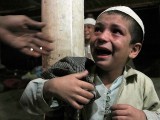
 Photo: Screenshot[/caption]
13) A nine-year-old boy worked at a barber shop, where he was the target of his employer. The boy went to work and was locked in a room and sexually assaulted multiple times. His employer also hit and threatened him to not tell anyone of this incident. The father of the boy later found out about this when the child refused to go to work the next day.
Every day, at least 11 children become victims of abuse. Every day, at least 11 children are failed by the very society that is supposed to protect them. Three districts of Punjab – Nankana Sahib, Sheikhupura, and Kasur – had recorded at least
Photo: Screenshot[/caption]
13) A nine-year-old boy worked at a barber shop, where he was the target of his employer. The boy went to work and was locked in a room and sexually assaulted multiple times. His employer also hit and threatened him to not tell anyone of this incident. The father of the boy later found out about this when the child refused to go to work the next day.
Every day, at least 11 children become victims of abuse. Every day, at least 11 children are failed by the very society that is supposed to protect them. Three districts of Punjab – Nankana Sahib, Sheikhupura, and Kasur – had recorded at least 



 Not unexpectedly, the twist of the story comes when Faris falls in love with Rania, one of his best friends; however, Rania only considers Faris as her
Not unexpectedly, the twist of the story comes when Faris falls in love with Rania, one of his best friends; however, Rania only considers Faris as her  Moreover, also in their group of friends are Hajra Yamin and Ayaz Samoo, and the group looks like any quintessential close-knitted group of college friends who have a lot of fun together.
The plot of the film is quite relatable from the youth’s perspective, as it focuses on the fun campus life, friendships, insecurities, emotional attachments, and all the little moments of joy that go along with it.
Moreover, also in their group of friends are Hajra Yamin and Ayaz Samoo, and the group looks like any quintessential close-knitted group of college friends who have a lot of fun together.
The plot of the film is quite relatable from the youth’s perspective, as it focuses on the fun campus life, friendships, insecurities, emotional attachments, and all the little moments of joy that go along with it.

 Norouzi is a valued addition, not just in this movie but to the Pakistani film industry, as she is said to be a multi-lingual and multi-talented person. Not only can she speak German, Farsi, Urdu, English and French, she has learnt dancing and plays football as a hobby as well. It seems like she was born to be a star, with doing films and living a life of glamour being her childhood dream, and with Maan Jao Na, it is all finally coming true for her.
Another interesting fact regarding the cast is that the stunts are real and performed by Adeel Chaudhry himself. Renowned as a musician and an actor, the actor accepted the challenge to perform all the stunts himself, from riding a Harley Davidson to
Norouzi is a valued addition, not just in this movie but to the Pakistani film industry, as she is said to be a multi-lingual and multi-talented person. Not only can she speak German, Farsi, Urdu, English and French, she has learnt dancing and plays football as a hobby as well. It seems like she was born to be a star, with doing films and living a life of glamour being her childhood dream, and with Maan Jao Na, it is all finally coming true for her.
Another interesting fact regarding the cast is that the stunts are real and performed by Adeel Chaudhry himself. Renowned as a musician and an actor, the actor accepted the challenge to perform all the stunts himself, from riding a Harley Davidson to 
 The performances seem stellar while the dance moves are electrifying, especially after the remix of Bijli Bhari Hay Meray Ang Ang Mai. Not only is the song a treat for the eyes, but the melody is so catchy that you will keep listening to it on repeat and just might become the new mehndi song!
The performances seem stellar while the dance moves are electrifying, especially after the remix of Bijli Bhari Hay Meray Ang Ang Mai. Not only is the song a treat for the eyes, but the melody is so catchy that you will keep listening to it on repeat and just might become the new mehndi song!
 The rom-com looks like a roller coaster ride of joy, sorrow and drama, and has all the ingredients to pull crowds to the theatres in February. Overall, Maan Jao Na seems like a complete entertainment package that will surely double the joys of Valentine’s Day and ensure that love is in the air! The film is scheduled to release on February 2, 2018.
All photos: Screenshots
The rom-com looks like a roller coaster ride of joy, sorrow and drama, and has all the ingredients to pull crowds to the theatres in February. Overall, Maan Jao Na seems like a complete entertainment package that will surely double the joys of Valentine’s Day and ensure that love is in the air! The film is scheduled to release on February 2, 2018.
All photos: Screenshots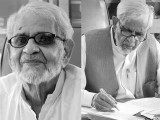

 Photo: Facebook/ Karachi Eat Food Festival[/caption]
The jammers too caused inconvenience to an extent, as people couldn’t use the wallet apps available to avail bulk discounts on food deals. The problems, however, were not great enough to dim the fun, and overall, the event was worth the wait.
Being one of the biggest food festivals of the country,
Photo: Facebook/ Karachi Eat Food Festival[/caption]
The jammers too caused inconvenience to an extent, as people couldn’t use the wallet apps available to avail bulk discounts on food deals. The problems, however, were not great enough to dim the fun, and overall, the event was worth the wait.
Being one of the biggest food festivals of the country,  Photo: Facebook/ Karachi Eat Food Festival[/caption]
[caption id="" align="alignnone" width="401"]
Photo: Facebook/ Karachi Eat Food Festival[/caption]
[caption id="" align="alignnone" width="401"] Photo: Facebook/ Karachi Eat Food Festival[/caption]
Since it was all about food, and Karachiites
Photo: Facebook/ Karachi Eat Food Festival[/caption]
Since it was all about food, and Karachiites  Photo: Madiha Shamim[/caption]
[caption id="" align="alignnone" width="480"]
Photo: Madiha Shamim[/caption]
[caption id="" align="alignnone" width="480"] Photo: The Express Tribune[/caption]
2. Chimney ice-cream by Café Praha
The chimney
Photo: The Express Tribune[/caption]
2. Chimney ice-cream by Café Praha
The chimney  Photo: Madiha Shamim[/caption]
3. Nachos by Grill in the City
Grill in the City was bound to attract a massive crowd due to their immense social media following and constant marketing. Their product offerings were corn dogs, grilled prawns, Mac n Cheese and nachos. To me, the nachos remained the highlight of their menu. They were fully loaded with jalapenos, corns, olives and sauces, and served with tortilla chips. The serving was also quite generous in comparison to what others were offering for Rs300.
Unlike other stalls, however, the queue at this one was extremely mismanaged, resulting in some frustration amongst customers. However, when a brand is famous on social media and offering a product worth one’s money, the crowd can obviously be expected to go crazy.
[caption id="" align="alignnone" width="450"]
Photo: Madiha Shamim[/caption]
3. Nachos by Grill in the City
Grill in the City was bound to attract a massive crowd due to their immense social media following and constant marketing. Their product offerings were corn dogs, grilled prawns, Mac n Cheese and nachos. To me, the nachos remained the highlight of their menu. They were fully loaded with jalapenos, corns, olives and sauces, and served with tortilla chips. The serving was also quite generous in comparison to what others were offering for Rs300.
Unlike other stalls, however, the queue at this one was extremely mismanaged, resulting in some frustration amongst customers. However, when a brand is famous on social media and offering a product worth one’s money, the crowd can obviously be expected to go crazy.
[caption id="" align="alignnone" width="450"] Photo: Madiha Shamim[/caption]
4. Pop Bar Popsicles
Pop Bar came out to be most affordable and an unexpected icy surprise to compliment the breezy festival. They had cherry,
Photo: Madiha Shamim[/caption]
4. Pop Bar Popsicles
Pop Bar came out to be most affordable and an unexpected icy surprise to compliment the breezy festival. They had cherry,  Photo: Madiha Shamim[/caption]
5. The Poutine Fries by No Lies Fries
The makers just introduced what Karachiites had been looking for years: Poutine Fries. These were topped with jalapenos, cheddar cheese, and meat, along with sauce that made it seem just as good as it does abroad. The venture worked out really well, as crowds were gather around the stall constantly.
However, I personally believe that the makers should have worked on presentation a bit, as it looked very unappealing. The case of “looks can be deceiving” applied here, as these
Photo: Madiha Shamim[/caption]
5. The Poutine Fries by No Lies Fries
The makers just introduced what Karachiites had been looking for years: Poutine Fries. These were topped with jalapenos, cheddar cheese, and meat, along with sauce that made it seem just as good as it does abroad. The venture worked out really well, as crowds were gather around the stall constantly.
However, I personally believe that the makers should have worked on presentation a bit, as it looked very unappealing. The case of “looks can be deceiving” applied here, as these  Photo: Madiha Shamim[/caption]
6. Waffle Chicken by Fry Guys
Fried chicken laden with Sriracha sauce and served in hot waffle was an offering that turned the eyes of every individual who passed by this stall. The combo made it just so exceptional that people didn’t hesitate having it more than once.
The only drawback was that serving size was small compared to the price being charged, especially the size of the cone, which should have been bigger.
[caption id="" align="alignnone" width="447"]
Photo: Madiha Shamim[/caption]
6. Waffle Chicken by Fry Guys
Fried chicken laden with Sriracha sauce and served in hot waffle was an offering that turned the eyes of every individual who passed by this stall. The combo made it just so exceptional that people didn’t hesitate having it more than once.
The only drawback was that serving size was small compared to the price being charged, especially the size of the cone, which should have been bigger.
[caption id="" align="alignnone" width="447"] Photo: Madiha Shamim[/caption]
Overall, the event remained as promising as it was meant to be. Ditching the traditional Bun Kebabs and Biryani, there was a lot more to treat the taste buds with that could fulfil food fantasies of any and all foodies in Karachi. For the next year, however, the management should provide support to new entrepreneurs through their official pages, as we only got to know about the awesomeness they were selling when we reached there. More importantly, the management should introduce multiple (at least three) entrance points to manage the crowds and mitigate traffic jams, making it easy to reach the venue and enjoy such a great food festival fully without the hassle.
Here's to looking forward to the next Karachi Eat!
Photo: Madiha Shamim[/caption]
Overall, the event remained as promising as it was meant to be. Ditching the traditional Bun Kebabs and Biryani, there was a lot more to treat the taste buds with that could fulfil food fantasies of any and all foodies in Karachi. For the next year, however, the management should provide support to new entrepreneurs through their official pages, as we only got to know about the awesomeness they were selling when we reached there. More importantly, the management should introduce multiple (at least three) entrance points to manage the crowds and mitigate traffic jams, making it easy to reach the venue and enjoy such a great food festival fully without the hassle.
Here's to looking forward to the next Karachi Eat!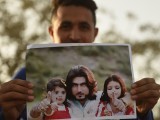

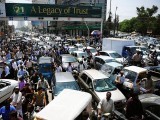
 Photo: Giphy[/caption]
2. Own the streets
Feel free to take a U-turn on a one-way bridge if you decide you don’t like the way it feels under you, or even if you simply feel like going the other way now.
Carpe diem! Live your life now; rules will be there tomorrow too.
[caption id="" align="alignnone" width="480"]
Photo: Giphy[/caption]
2. Own the streets
Feel free to take a U-turn on a one-way bridge if you decide you don’t like the way it feels under you, or even if you simply feel like going the other way now.
Carpe diem! Live your life now; rules will be there tomorrow too.
[caption id="" align="alignnone" width="480"] Photo: Giphy[/caption]
3. Seat belt? Pfft!
Photo: Giphy[/caption]
3. Seat belt? Pfft!
 Photo: Giphy[/caption]
4. Don't follow the bright lights
Think of traffic signals more like suggestions – rather than existing for legal purposes – and don’t take them too seriously. Yes, it’s better if you come to a halt when the signal turns red, but it’s also okay if you don’t.
[caption id="" align="alignnone" width="480"]
Photo: Giphy[/caption]
4. Don't follow the bright lights
Think of traffic signals more like suggestions – rather than existing for legal purposes – and don’t take them too seriously. Yes, it’s better if you come to a halt when the signal turns red, but it’s also okay if you don’t.
[caption id="" align="alignnone" width="480"] Photo: Giphy[/caption]
We are an understanding people; we recognise your time is more important than other people’s lives.
5. Live every day like your last
Pedestrians, if you want to cross Shahrae Faisal, don’t waste your time finding a pedestrian bridge! Just recite Bismillah and cross the busy no-signal corridor while holding up your hand in a gesture that screams,
Photo: Giphy[/caption]
We are an understanding people; we recognise your time is more important than other people’s lives.
5. Live every day like your last
Pedestrians, if you want to cross Shahrae Faisal, don’t waste your time finding a pedestrian bridge! Just recite Bismillah and cross the busy no-signal corridor while holding up your hand in a gesture that screams,
 Photo: Giphy[/caption]
After all,
Photo: Giphy[/caption]
After all,  Photo: Giphy[/caption]
6. Take a moment to reconnect
See a friend on the road? By all means, slow down, put your foot on their motorcycle affectionately, and have a yelling conversation for the next couple of kilometres, all while the traffic behind you drags on. After all, what’s the point of having a road, if not making it possible to have such heart-warming interactions?
[caption id="" align="alignnone" width="476"]
Photo: Giphy[/caption]
6. Take a moment to reconnect
See a friend on the road? By all means, slow down, put your foot on their motorcycle affectionately, and have a yelling conversation for the next couple of kilometres, all while the traffic behind you drags on. After all, what’s the point of having a road, if not making it possible to have such heart-warming interactions?
[caption id="" align="alignnone" width="476"] Photo: Giphy[/caption]
[caption id="" align="alignnone" width="473"]
Photo: Giphy[/caption]
[caption id="" align="alignnone" width="473"] Photo: Giphy[/caption]
7. Be like Triple'D aka Dare Devil Danish
If you are a cool guy, there is no better way to establish how ‘yo’ you are than doing wheelies in fast traffic lanes. Girls around you will immediately get excited and start shouting and pointing! Who cares if they’re shouting things like,
Photo: Giphy[/caption]
7. Be like Triple'D aka Dare Devil Danish
If you are a cool guy, there is no better way to establish how ‘yo’ you are than doing wheelies in fast traffic lanes. Girls around you will immediately get excited and start shouting and pointing! Who cares if they’re shouting things like,
 Photo: Giphy[/caption]
8. *Beep* it
It is a scientifically verified fact that if not used regularly, machines will lose their functionality and become obsolete. Please do not let your car horn die from lack of usage! Ideally (as I have seen our drivers do), you should maintain a ratio of honking 10 times for every one time you apply the brakes.
Here’s an even simpler measure: If people around you are not looking at you with hate in their eyes, you aren’t honking enough.
[caption id="" align="alignnone" width="480"]
Photo: Giphy[/caption]
8. *Beep* it
It is a scientifically verified fact that if not used regularly, machines will lose their functionality and become obsolete. Please do not let your car horn die from lack of usage! Ideally (as I have seen our drivers do), you should maintain a ratio of honking 10 times for every one time you apply the brakes.
Here’s an even simpler measure: If people around you are not looking at you with hate in their eyes, you aren’t honking enough.
[caption id="" align="alignnone" width="480"] Photo: Giphy[/caption]
9. Learn to read between the 'lanes'
Being in the right lane is your birth right. If everyone agrees that the colour of your skin shouldn’t determine your civil liberties, then why should the speed of your vehicle be allowed to determine what lane you drive in?
Fight the power! Overtake from the left, and slow down once you’re in the right-most lane. After all, the middle finger exists for a reason.
[caption id="" align="alignnone" width="474"]
Photo: Giphy[/caption]
9. Learn to read between the 'lanes'
Being in the right lane is your birth right. If everyone agrees that the colour of your skin shouldn’t determine your civil liberties, then why should the speed of your vehicle be allowed to determine what lane you drive in?
Fight the power! Overtake from the left, and slow down once you’re in the right-most lane. After all, the middle finger exists for a reason.
[caption id="" align="alignnone" width="474"] Photo: Giphy[/caption]
10. If Google can be right, then so can you!
There is no such thing as going the “wrong way” – it’s all a
Photo: Giphy[/caption]
10. If Google can be right, then so can you!
There is no such thing as going the “wrong way” – it’s all a  Photo: Giphy[/caption]
Little known fact: when you’re on a street and are confused about which way you want to go, you are on
Photo: Giphy[/caption]
Little known fact: when you’re on a street and are confused about which way you want to go, you are on  Photo: Giphy[/caption]
And finally, do not forget that the only real person on the road with a family, life, dreams, and someplace to go is ‘you’. Everyone else is like a disposable character from
Photo: Giphy[/caption]
And finally, do not forget that the only real person on the road with a family, life, dreams, and someplace to go is ‘you’. Everyone else is like a disposable character from 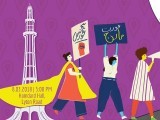
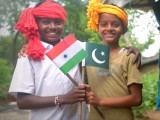
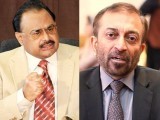
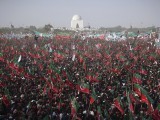
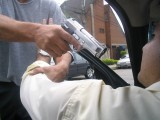
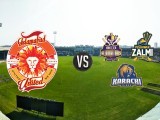
 Darren Sammy celebrates a wicket during Quetta Gladiators v Peshawar Zalmi in Sharjah, on March 1, 2018. Photo: Pakistan Super League[/caption]
Sarfraz’s Gladiators will be eyeing a third straight final, but
Darren Sammy celebrates a wicket during Quetta Gladiators v Peshawar Zalmi in Sharjah, on March 1, 2018. Photo: Pakistan Super League[/caption]
Sarfraz’s Gladiators will be eyeing a third straight final, but  Shane Watson started off tentatively; Quetta Gladiators v Peshawar Zalmi in Sharjah on March 1, 2018. Photo: Pakistan Super League[/caption]
Their replacement, Sri Lanka’s T20 specialist,
Shane Watson started off tentatively; Quetta Gladiators v Peshawar Zalmi in Sharjah on March 1, 2018. Photo: Pakistan Super League[/caption]
Their replacement, Sri Lanka’s T20 specialist,  Kamran Akmal soaks in the applause during Lahore Qalandars v Peshawar Zalmi in Sharjah, on March 16, 2018. Photo: Pakistan Super League[/caption]
Can the Kings bounce back after a demoralising defeat?
Kamran Akmal soaks in the applause during Lahore Qalandars v Peshawar Zalmi in Sharjah, on March 16, 2018. Photo: Pakistan Super League[/caption]
Can the Kings bounce back after a demoralising defeat?
 Luke Ronchi smashed the fastest fifty of the qualifier, Islamabad United v Karachi Kings in Dubai on March 18, 2018. Photo: Pakistan Super League[/caption]
Although the result was a punch to the gut for the Karachi based franchise, nevertheless, they will have another chance of booking a place in the eagerly anticipated final in their own backyard, as they await the winner of the first eliminator between Zalmi and the Gladiators.
While taking nothing away from Ronchi’s match winning innings, it is fair to suggest that the Kings’ passive approach during the first half of their batting, and their slightly nonsensical bowling and fielding setups, were a major factor in this embarrassing defeat. They have got to be more measured in their approach in the next eliminator, in order to avoid suffering the same fate.
One of the keys to the Kings’ success this year has been the spin combo of Captain
Luke Ronchi smashed the fastest fifty of the qualifier, Islamabad United v Karachi Kings in Dubai on March 18, 2018. Photo: Pakistan Super League[/caption]
Although the result was a punch to the gut for the Karachi based franchise, nevertheless, they will have another chance of booking a place in the eagerly anticipated final in their own backyard, as they await the winner of the first eliminator between Zalmi and the Gladiators.
While taking nothing away from Ronchi’s match winning innings, it is fair to suggest that the Kings’ passive approach during the first half of their batting, and their slightly nonsensical bowling and fielding setups, were a major factor in this embarrassing defeat. They have got to be more measured in their approach in the next eliminator, in order to avoid suffering the same fate.
One of the keys to the Kings’ success this year has been the spin combo of Captain  Shahid Afridi goes through his trademark celebratory routine during Peshawar Zalmi v Karachi Kings in Dubai on February 25, 2018. Photo: Pakistan Super League[/caption]
Wasim’s
Shahid Afridi goes through his trademark celebratory routine during Peshawar Zalmi v Karachi Kings in Dubai on February 25, 2018. Photo: Pakistan Super League[/caption]
Wasim’s 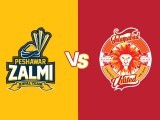
 Luke Ronchi smashed the fastest fifty of the PSL, Islamabad United v Karachi Kings, qualifier, PSL 2018, Dubai, March 18, 2018. Photo: Pakistan Super League[/caption]
Luke Ronchi smashed the fastest fifty of the PSL, Islamabad United v Karachi Kings, qualifier, PSL 2018, Dubai, March 18, 2018. Photo: Pakistan Super League[/caption]
 Asif Ali is congratulated by Luke Rochi upon catching Kumar Sangakkara, Multan Sultans v Islamabad United, PSL 2018, Dubai, February 25, 2018. Photo: Pakistan Super League[/caption]
[caption id="" align="alignnone" width="600"]
Asif Ali is congratulated by Luke Rochi upon catching Kumar Sangakkara, Multan Sultans v Islamabad United, PSL 2018, Dubai, February 25, 2018. Photo: Pakistan Super League[/caption]
[caption id="" align="alignnone" width="600"] Hussain Talat celebrates victory with Misbah-ul-Haq. Photo: Pakistan Super League[/caption]
Hussain Talat celebrates victory with Misbah-ul-Haq. Photo: Pakistan Super League[/caption]
 Kamran Akmal soaks in the applause, Lahore Qalandars v Peshawar Zalmi, PSL 2018, Sharjah, March 16, 2018. Photo: Pakistan Super League[/caption]
Kamran Akmal soaks in the applause, Lahore Qalandars v Peshawar Zalmi, PSL 2018, Sharjah, March 16, 2018. Photo: Pakistan Super League[/caption]
 Darren Sammy celebrates a wicket, Quetta Gladiators v Peshawar Zalmi, Sharjah, March 1, 2018. Photo: Pakistan Super League[/caption]
Darren Sammy celebrates a wicket, Quetta Gladiators v Peshawar Zalmi, Sharjah, March 1, 2018. Photo: Pakistan Super League[/caption]

 Pakistani workers fix a billboard featuring images of players ahead of the Pakistan Super League (PSL) cricket match in Karachi. PHOTO: AFP[/caption]
Since the PSL is mostly about regional rivalry, most of Karachi was undoubtedly supporting the
Pakistani workers fix a billboard featuring images of players ahead of the Pakistan Super League (PSL) cricket match in Karachi. PHOTO: AFP[/caption]
Since the PSL is mostly about regional rivalry, most of Karachi was undoubtedly supporting the  Cricket fans wave the Pakistani national flag at the National Cricket Stadium during the Pakistan Super League final on March 25, 2018. PHOTO: AFP[/caption]
We were told that gathering outside the stadium on the day of the final would be a tough task, as the process to ensure security would result in long queues and hours of waiting. But after experiencing it myself, I have to commend the security arrangements. The security staff was professional yet polite, and even went to the extent of gifting bouquets to the cricket fans as a gesture to welcome them. It was equally amazing to see the fans remain disciplined and cooperative as they waited patiently for hours, which, if you are from Karachi, you must know is a miracle in itself.
[caption id="" align="alignnone" width="600"]
Cricket fans wave the Pakistani national flag at the National Cricket Stadium during the Pakistan Super League final on March 25, 2018. PHOTO: AFP[/caption]
We were told that gathering outside the stadium on the day of the final would be a tough task, as the process to ensure security would result in long queues and hours of waiting. But after experiencing it myself, I have to commend the security arrangements. The security staff was professional yet polite, and even went to the extent of gifting bouquets to the cricket fans as a gesture to welcome them. It was equally amazing to see the fans remain disciplined and cooperative as they waited patiently for hours, which, if you are from Karachi, you must know is a miracle in itself.
[caption id="" align="alignnone" width="600"] Cricket fans lineup outside the the National Cricket Stadium in Karachi on March 25, 2018, for the PSL final. PHOTO: AFP[/caption]
Once you entered the stadium, the long walk and security procedure felt worth it. The charge of excitement could be felt in the crowd, and as one took their seats, it was clear from the get go that this was going to be an unforgettable experience. As the grand finale kicked off with some great music, the energy of the crowd only heightened, especially when crowd pleasers such as
Cricket fans lineup outside the the National Cricket Stadium in Karachi on March 25, 2018, for the PSL final. PHOTO: AFP[/caption]
Once you entered the stadium, the long walk and security procedure felt worth it. The charge of excitement could be felt in the crowd, and as one took their seats, it was clear from the get go that this was going to be an unforgettable experience. As the grand finale kicked off with some great music, the energy of the crowd only heightened, especially when crowd pleasers such as  Islamabad United players celebrate their victory over Peshawar Zalmi. PHOTO: AFP[/caption]
The people of Karachi are undoubtedly indebted to all those international players who made this experience possible for them – the players who came to Pakistan, and to Karachi specifically, when their peers were reluctant to do so. They made us dance, cheer and laugh, and most importantly, they gave us hope, and we genuinely thank them for it.
https://twitter.com/PeshawarZalmi/status/978061062711988224
https://twitter.com/captainmisbahpk/status/978256997173866497
The return of international cricket in Karachi has just begun, and after this grand inauguration, the National Stadium is now
Islamabad United players celebrate their victory over Peshawar Zalmi. PHOTO: AFP[/caption]
The people of Karachi are undoubtedly indebted to all those international players who made this experience possible for them – the players who came to Pakistan, and to Karachi specifically, when their peers were reluctant to do so. They made us dance, cheer and laugh, and most importantly, they gave us hope, and we genuinely thank them for it.
https://twitter.com/PeshawarZalmi/status/978061062711988224
https://twitter.com/captainmisbahpk/status/978256997173866497
The return of international cricket in Karachi has just begun, and after this grand inauguration, the National Stadium is now 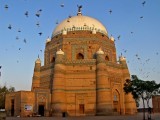
 Legend dictates Multan is Pakistan’s mystical heartland, and visiting the city is considered a spiritual journey for the pilgrim. After all, each of the likes of Bahauddin Zakariya,
Legend dictates Multan is Pakistan’s mystical heartland, and visiting the city is considered a spiritual journey for the pilgrim. After all, each of the likes of Bahauddin Zakariya,  Overcoming my initial awe and entering the tomb, I was transported to an entirely different world altogether. Decorated with lines of colourful lariyaan (flower strings), it was all unbelievably surreal.
Taking a moment to close my eyes, I felt an indescribable calm wash over me. I realised there was no protocol at all – you just had to be. Everyone else was simply doing what they wanted to. Some devotees slept on the shrine floor, some chanted a kalaam I couldn’t really understand, while others just stood praying near the grave.
There were small white structures around the main grave, which I was later told were graves of Rukn-e-Alams’ devotees. Upon my enquiry, I was informed these people were buried vertically; hence the small size of the graves.
Overcoming my initial awe and entering the tomb, I was transported to an entirely different world altogether. Decorated with lines of colourful lariyaan (flower strings), it was all unbelievably surreal.
Taking a moment to close my eyes, I felt an indescribable calm wash over me. I realised there was no protocol at all – you just had to be. Everyone else was simply doing what they wanted to. Some devotees slept on the shrine floor, some chanted a kalaam I couldn’t really understand, while others just stood praying near the grave.
There were small white structures around the main grave, which I was later told were graves of Rukn-e-Alams’ devotees. Upon my enquiry, I was informed these people were buried vertically; hence the small size of the graves.
 Right outside the tomb area is a “mannat-kadda”, which is a large sized lantern with “diyas” lit inside. A local man pointed out that for my prayers to actually be heard, I would have to place some money in the ledge beneath the mannat-kadda. Not sure how reliable this advice is.
Right outside the tomb area is a “mannat-kadda”, which is a large sized lantern with “diyas” lit inside. A local man pointed out that for my prayers to actually be heard, I would have to place some money in the ledge beneath the mannat-kadda. Not sure how reliable this advice is.
 Nonetheless, the time I spent at this shrine gave me a new perspective on life in general. What does shrine culture represent to devotees who visit shrines across Pakistan? Is it just for nomads who count on getting a meal or two for free? Or is it about experiencing personal peace? Maybe there are those who have complete faith in the divine healing powers of the
Nonetheless, the time I spent at this shrine gave me a new perspective on life in general. What does shrine culture represent to devotees who visit shrines across Pakistan? Is it just for nomads who count on getting a meal or two for free? Or is it about experiencing personal peace? Maybe there are those who have complete faith in the divine healing powers of the